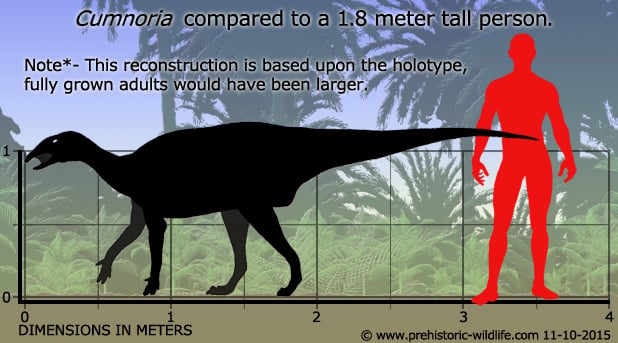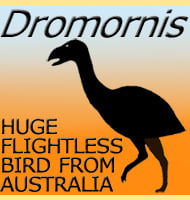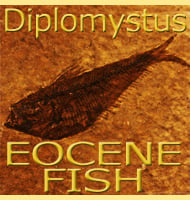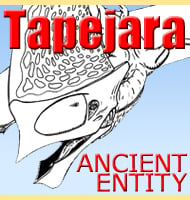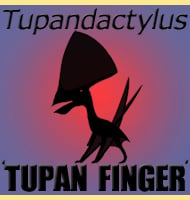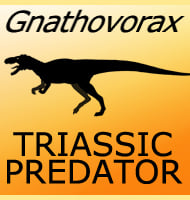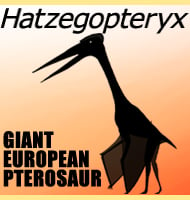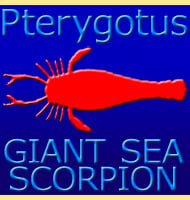In Depth
Another European ornithopod that was once described as a species of Camptosaurus, Cumnoria was established as a distinct genus in 1888. At three and a half meters long for the first (and at the time of writing only) individual found, it may be that Cumnoria was a fairly small ornithopod. However, studies of the bones of Cumnoria reveal that this individual was probably juvenile, and still had some growing to do, though an adult size cannot be ascertained without further fossils. Like other dinosaurs of its type, Cumnoria would have been a plant eater, browsing upon low to medium height growing plants.
Further Reading
– On the discovery of a species of Iguanodon in the Kimmeridge Clay near Oxford; and a notice of a very fossiliferous band of the Shotover Sands. – Geological Magazine, New Series, Decade 2. 6 (5): 193–195. – J. Prestwich – 1879. – Iguanodon prestwichii, a new species from the Kimmeridge Clay, distinguished from I. mantelli of the Wealden Formation in the S.E. of England and Isle of Wight by differences in the shape of the vertebral centra, by fewer than five sacral vertebrae, by the simpler character of its tooth-serrature, etc., founded on numerous fossil remains lately discovered at Cumnor, near Oxford. – Quarterly Journal of the Geological Society of London. 36 (143): 433–456. – J. W. Hulke – 1880. - On Cumnoria, an iguanodont genus founded upon the Iguanodon prestwichi, Hulke. - Report of the British Association for the Advancement of Science 57:698. - Harry Govier Seeley - 1888. – The ornithischian dinosaur Camptosaurus prestwichii from the Upper Jurassic of England. – Palaeontology. 23: 411–443. – P. M. Galton & H. P. Powell – 1980.
